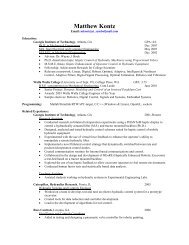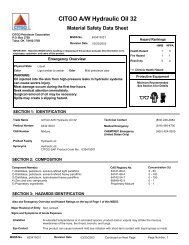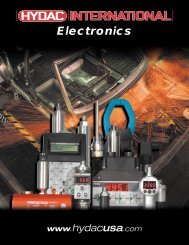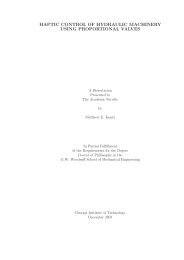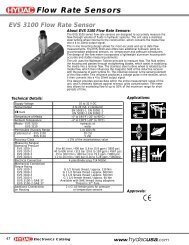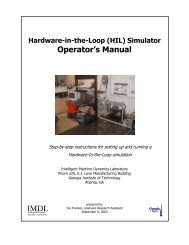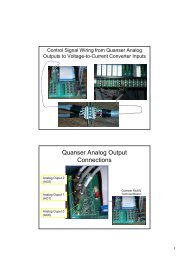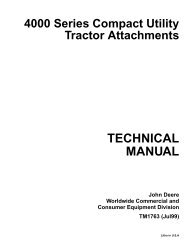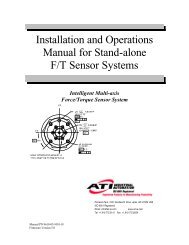PVG 32 Proportional Valves Technical Information
PVG 32 Proportional Valves Technical Information
PVG 32 Proportional Valves Technical Information
Create successful ePaper yourself
Turn your PDF publications into a flip-book with our unique Google optimized e-Paper software.
<strong>PVG</strong> <strong>32</strong> <strong>Proportional</strong> Valve<br />
<strong>Technical</strong> <strong>Information</strong><br />
System safety<br />
1.<br />
MAXIMUM SAFETY<br />
DEMANDS<br />
When the fault monitoring system in PVEH is connected, the reaction to electrical and<br />
mechanical faults (e.g. a spool seizure) is fast and operator-independent. See page 17<br />
“fault monitoring”.<br />
A system can be protected against many electrical, hydraulic and mechanical faults by<br />
building in components as shown in the diagram:<br />
R: Alarm logic EHA (or relay) connected to the fault monitoring system in PVEH<br />
E: Electrical emergency stop<br />
M: Solenoid valve<br />
C: Pilot-operated check valve<br />
The alarm logic EHA cuts off current to the solenoid valve (M) when PVEH monitoring<br />
registers a fault. The solenoid valve then leads the oil flow direct from pump to tank.<br />
Thus all functions are without operating pressure, i.e. locked in position, because there is<br />
no pilot pressure on the pilot operated check valve (C).<br />
Actuation of the emergency switch (E) cuts off current to the proportional valve and the<br />
solenoid valve (M). Actuation in this case is manual, but the result is the same as above.<br />
Stopping or disconnecting the pump drive motor is another safety measure, if the system<br />
reaction time can be accepted.<br />
Note:<br />
The neutral position switch in the remote control units should not be used.<br />
PVEH with fault monitoring must have a constant voltage supply.<br />
50 520L0344



